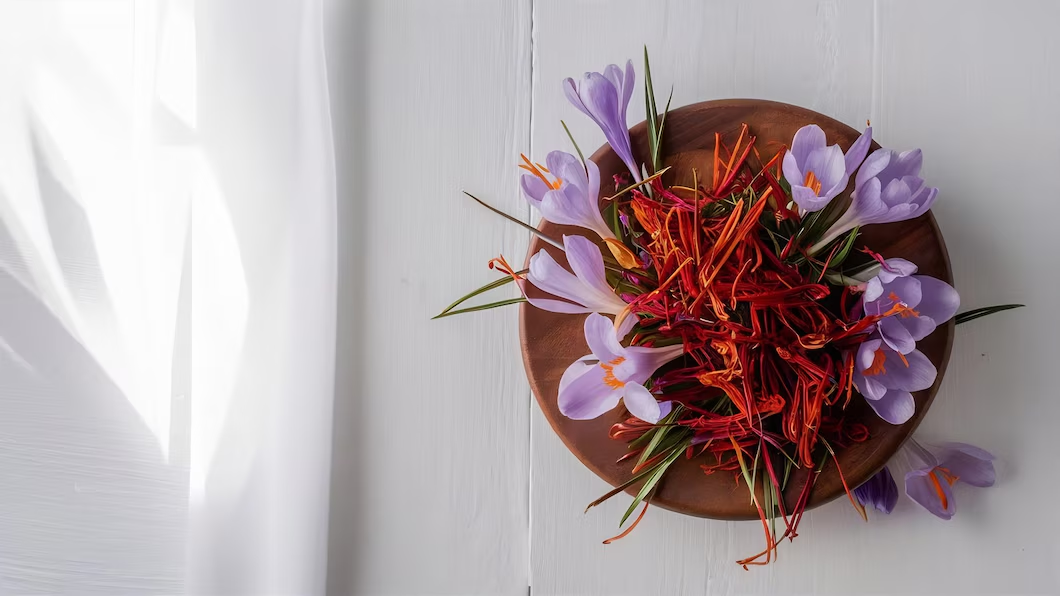Saffron, often referred to as “red gold,” is one of the most sought-after spices in the world. Known for its distinct aroma, vibrant color, and unique flavor, saffron has been used for centuries in culinary, medicinal, and even ceremonial applications. However, finding authentic, high-quality saffron can be a challenge. If you’re wondering where buy saffron without compromising on quality, you’re in the right place. This guide provides an in-depth look at how to choose the best saffron and the best sources to purchase it from.
What is Saffron and Why is it So Valuable?
Saffron is derived from the stigma of the Crocus sativus flower. Each flower produces only three stigmas, which are carefully handpicked, dried, and packaged. This labor-intensive harvesting process is one reason why saffron is so expensive. Additionally, saffron’s unique chemical compounds—like crocin, picrocrocin, and safranal—are responsible for its color, taste, and aroma, making it an indispensable ingredient in a wide variety of dishes and treatments.
The Global Demand for Saffron
The demand for saffron is growing worldwide, especially in the food, cosmetics, and pharmaceutical industries. Countries like Iran, Spain, India, and Afghanistan are the primary producers of saffron, with Iran contributing approximately 90% of the global supply. As the market grows, so does the prevalence of counterfeit saffron, making it crucial to know where to purchase authentic products.
Key Factors to Consider When Buying Saffron
When searching for saffron, keep these factors in mind to ensure you’re purchasing a high-quality product:
- Origin: Iranian saffron is often regarded as the best in the world, followed by Spanish and Kashmiri varieties.
- Color: High-quality saffron should have deep red threads with minimal yellow or white parts.
- Aroma: Authentic saffron has a rich, earthy, and slightly sweet aroma.
- Packaging: Look for airtight packaging that protects saffron from moisture and sunlight.
- Price: While saffron is expensive, extremely low prices are often a red flag for adulterated or low-quality products.
- Certifications: Reputable brands provide lab certifications to verify purity and quality.
Top Places to Buy Saffron
To address the question where buy saffron, here are some reliable options:
1. Online Marketplaces
Online platforms like Amazon, eBay, and Etsy offer a wide range of saffron brands. While convenient, ensure you check reviews and certifications before purchasing. Look for sellers with high ratings and verified customer feedback.
2. Specialty Stores
Specialty spice shops often stock high-quality saffron. These stores usually source directly from reputable growers, ensuring authenticity.
3. Local Markets
If you live near a community with Middle Eastern, South Asian, or Mediterranean populations, explore their local markets. Many of these markets stock saffron imported directly from its countries of origin.
4. Direct from Producers
Purchasing directly from saffron producers in Iran, Spain, or India ensures authenticity. Many producers now have online platforms that ship globally.
5. Certified Organic Stores
Organic stores often carry saffron that has been certified organic. This guarantees that the saffron is free from pesticides and other harmful chemicals.
How to Spot Fake Saffron
Fake saffron is often dyed or made from safflower petals, turmeric, or other substances. Here are some tips to identify counterfeit saffron:
- Water Test: Place a few threads in water. Genuine saffron releases its color slowly and maintains its red hue, while fake saffron dissolves quickly or turns yellow.
- Burn Test: Authentic saffron burns with a bright orange flame. Counterfeit saffron produces a dark or black flame.
- Smell: Fake saffron often has no aroma or smells artificially sweet.
- Price Check: If the price seems too good to be true, it probably is.
Comparison Chart: Best Saffron Sources
| Source | Quality | Price Range | Availability | Certifications |
|---|---|---|---|---|
| Iranian Brands | Premium | $10-$15/gram | Global Shipping | ISO 3632 Certified |
| Spanish Saffron | High | $12-$18/gram | Widely Available | EU PDO Certification |
| Kashmiri Saffron | Limited | $20-$25/gram | Select Regions | GI Certification |
| Online Stores | Varies | $8-$25/gram | Worldwide | Lab-Tested Options |
| Local Markets | Varies | $5-$20/gram | Regional | Varies |
Tips for Storing Saffron
Once you’ve determined where buy saffron and have acquired your stash, proper storage is crucial to maintain its potency. Here’s how:
- Airtight Containers: Store saffron in an airtight container to prevent exposure to moisture.
- Cool, Dark Place: Keep saffron away from sunlight and heat.
- Avoid Refrigeration: While it might seem logical, refrigeration can introduce moisture and reduce saffron’s quality.
- Use Within Two Years: Saffron has a long shelf life but gradually loses its aroma and flavor over time.
Health Benefits of Saffron
Saffron is more than just a culinary delight; it’s also packed with health benefits. Some of its most notable benefits include:
- Mood Enhancement: Saffron has been shown to help alleviate symptoms of depression and anxiety.
- Antioxidant Properties: The spice is rich in antioxidants, which help combat oxidative stress.
- Improved Digestion: Saffron aids in digestion and helps reduce bloating.
- Heart Health: Regular consumption can lower cholesterol levels and improve heart health.
- Skin Benefits: Saffron is often used in skincare products for its brightening and anti-inflammatory properties.
Recipes That Showcase Saffron
Now that you know where buy saffron, it’s time to use it! Here are some popular recipes:
1. Saffron Rice
- Ingredients: Basmati rice, saffron threads, butter, and water.
- Directions: Soak saffron in warm water for 15 minutes. Cook rice with saffron water for a rich, golden hue and aromatic flavor.
2. Paella
- Ingredients: Rice, seafood, saffron, paprika, and vegetables.
- Directions: Add saffron to the broth for an authentic Spanish paella.
3. Saffron Tea
- Ingredients: Saffron threads, hot water, honey, and lemon.
- Directions: Steep saffron in hot water for 10 minutes. Add honey and lemon for a soothing tea.
Conclusion
Finding authentic saffron doesn’t have to be a daunting task. By knowing what to look for and where to buy saffron, you can enjoy this luxurious spice in its purest form. Whether you choose to shop online, visit specialty stores, or buy directly from producers, always prioritize quality over price. With the right saffron, your culinary and health endeavors are sure to flourish!
FAQs
1. How much does saffron cost?
The price of saffron varies depending on its origin, quality, and certifications. On average, expect to pay $10-$25 per gram.
2. Is it safe to buy saffron online?
Yes, as long as you choose reputable sellers with positive reviews and proper certifications.
3. Can I grow saffron at home?
Yes, saffron can be grown in home gardens if you have the right climate and soil conditions.
4. What is the difference between powdered and thread saffron?
Thread saffron is less likely to be adulterated, while powdered saffron is more convenient but requires careful verification of purity.










